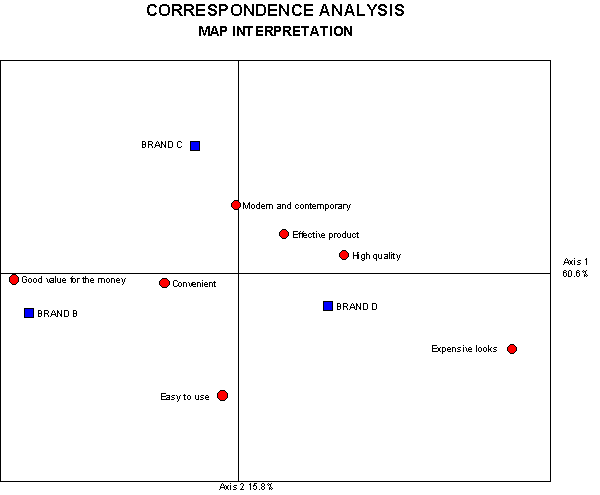
Correspondence Map Interpretation

"...geometrically, a particular brand will tend to a position in its space corresponding to the attribute categories prominent in that brand profile. Similarly, given the display of brand profiles, a particular attribute category will tend along the principal axes in the direction of the brands that are relatively substantial in that category." (Hoffman and Franke, 219){linkID=5}
Additional interpretation requires observing the correlations of the attributes with the principal axes and the inertias of the various points.(correlations and inertias are printed in the statistics output sheet).(Hoffman and Franke, 219-221){linkID=5} In the example above, 'high quality' and 'expensive looks', and (in the opposite direction) 'good value...' would define axis one, while 'easy to use' vs. 'modern and contemporary' define axis two. In following axis one from left to right (and observing the brand positions as we do so) we can see that Brand B is considered more of a 'good value' than is Brand C, than is Brand D. The opposite relationship holds for 'high quality.' In terms of the second axis, Brand B is only slightly 'easier to use' than is Brand D, while Brand C is considered less 'easy' but more 'modern.'
It should be remembered that the correspondence map is based upon the brands' attribute profiles and NOT their overall scores. Indeed, in the data for the above map, Brand D was scored highest overall on all but one of the attributes! The reason Brand C looks highest on 'modern and contemporary' is because it scored relatively lower on the other attributes than did Brand D -- Brand C's profile peaked more on 'modern and contemporary' (relative to its scores on other attributes).
Please see also Correspondence Analysis for further discussion of this topic.
Copyright © 1994 - 2017 WRC Research Systems, Inc.
Still need help? Please email us with any questions .